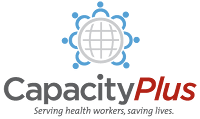Glossary of HRH Global Resource Center Subject Terms
The following definitions relate only to how these terms are using within the context of the HRH Global Resource Center and are not intended to be formal classifications of these topics.
- Community Interventions
- programs that involve members of the community as providers of care to reduce health worker burden
- Community Health Workers
health workers recruited from the community to fill health care gaps due to physician and nurse shortages or paraprofessional health staff based in a community, may be paid or volunteer
- Community Health Workers
- Coping Strategies
- methods used by health workers to subsidize low salaries or make a living wage
- Absenteeism
health workers who do not show up to work or who leave for very long breaks, also includes workers who are on the payroll and receive pay but do not actually work, aka ghost workers - Multiple Job Holding
also known as dual job holding or moonlighting, people who work in both the private and public health sectors
- Absenteeism
- Deployment
- how health workers are assigned to different posts or how the distribution of personnel is determined
- Rural/Urban Imbalance
the inequitable concentration of health workers in urban areas to the detriment of rural locations, or the gaps in health worker deployment to rural areas in general - Skill Mix Imbalance
inequitable concentration of health care skill sets or lack of workers with appropriate skill sets in certain areas to meet basic health needs
- Rural/Urban Imbalance
- Education and Training
- general documents about educating and training of health workers
- Continuing Education
continuing education for health workers who have already completed their pre-service education - Curricula
curriculum that can be used to train health workers/trainers/managers in HRH-related topics - Distance Education
health worker training which can be done remotely - In-Service Training
training programs for current health workers - Pre-Service Education
training programs for future health workers - Training Effectiveness
the impact of training programs on health worker performance - Training Methodologies
approaches to developing training systems, classes or curricula - Training of Trainers
educating health worker trainers
- Continuing Education
- Faith-Based Organizations (FBOs)
- organizations founded on religious principles that work in the health sector
- Fragile Environments
- health workers and HRH in unstable areas due to political unrest, war, natural disasters, etc.
- Conflict Affected Regions
health workers and HRH areas affected by political unrest and war - Natural Disaster Affected Regions
health workers and HRH areas affected by natural disasters such as earthquakes, hurricanes, etc.
- Conflict Affected Regions
- Gender Issues
- gender issues as they relate to HRH
- Gender Based Violence
violence that occurs based on gender - Gender Policy
policies related to HRH and gender - Gender Roles
roles traditionally assigned to a specific gender, or challenging these roles in order to fill the ranks of the health workers and provide more equitable access and opportunities - Sexual Harassment
unwelcome verbal or physical conduct towards health workers
- Gender Based Violence
- Health Sector Reform
- changes in the governance of the health sector and the impact on health workers
- Decentralization
a type of health sector reform undertaken to give more power to local units, as opposed to decisions being made by a central authority
- Decentralization
- HIV/AIDS
- HIV/AIDS as it relates to health workers
- Antiretroviral Treatment
Antiretroviral Treatments (ARTs) and health workers, also known as ARV and HAART - Counseling and Testing
counseling and testing that occurs before and after an HIV/AIDS test; includes Voluntary Counseling and Testing (VCT) and Provider Initiated Counseling and Testing (PICT) - HIV/AIDS Stigma
stigma of HIV/AIDs pertaining to health workers either in resistance to providing treatment to HIV/AIDS patients or discrimination against HIV positive health workers - HIV/AIDS Workplace Interventions
programs run by businesses or organizations to provide HIV/AIDS care to health workers or employees - Home-Based Care
health interventions designed to be delivered in the patient’s home or that can be carried out in the home by non-professional health care workers or family/community members - Mother to Child Transmission
health workers role in preventing the spread of HIV/AIDS to children from mothers - Palliative Care
health care for individuals with terminal illnesses and the impact on health workers and the health system
- Antiretroviral Treatment
- Human Resources Management
- management of employees of the health sector
- Career Development
issues related to continuing professional development, career planning, etc. - Health Sector Managers
issues affecting managers of health workers or management skills for people in the health sector - Hiring
process of hiring health workers - Salary
remuneration of health workers - Staffing Ratio
the ratio of staff members to number of patients and how it impacts care and health workers - Staff Performance Assessment
review of health worker performance, knowledge or competency - Supervision
supervision of health workers
- Career Development
- Infectious Diseases
- treatment of specific diseases as they relate to HRH
- Malaria
the impact of malaria on health workers and the personnel needs required to deliver care - Tuberculosis
the impact of tuberculosis on health workers and the personnel needs required to deliver care
- Malaria
- Information Technologies
- technologies used to manage the health workforce, provide access to health personnel, or serve a service delivery role normally filled by health workers
- Health Information Systems
a database or system designed to aid in the management of health, particularly human resources, e.g. tracking health workers’ deployment, training, certification, projections, etc. - Information System Development
the processes and tools required to create an information system
- Health Information Systems
- Knowledge Management
- methods for sharing HRH information
- Leadership
- leadership skills and opportunities for health workers
- Maternal & Child Health
- health worker contributions and responsibilities for the health of expectant and new mothers and their children
- Emergency Obstetric Care
the emergency administration of obstetric care - Midwifery
prenatal, natal and postpartum care by midwives, and their role in the provision of maternal and child care - Skilled Attendance
birth attendants who have successfully completed a duly recognized educational program and the importance of such personnel in safe delivery and postpartum care
- Emergency Obstetric Care
- Monitoring & Evaluation
- overseeing and assessing health worker performance or a human resources for health intervention
- Nursing
- the practice of nurses and the nursing profession; nurses’ role in providing health care
- Out-Migration/Brain Drain
- the movement of health workers away from resource-limited settings, such as developing countries or rural areas, to resource-rich settings such as developed countries or cities
- Partnerships
- relationships among multiple health sector organizations or units, including governments, companies, countries, non-profits, etc. to fill health care needs
- Contracting
hiring a non-government organization to provide health services - Public-Private Partnerships
focused on public-private partnerships in the health sector, usually between a government and a private corporation or group of corporations
- Contracting
- Pharmacy
- the role of pharmacists in providing health care and the safe and effective dispensation and use of medication by formal health workers
- Planning
- effectively planning for human resources for health needs
- Advocacy
lobbying for changes that will affect health workers - Ethical Planning
questions of ethics regarding the health sector and health workers such as the dilemmas raised by the migration of health workers from resource-poor countries - Financial Aspects
the monetary cost considerations of HRH planning - HRH Strategic Plans
a specific planned approach to meeting HRH needs - Workforce Assessment
ascertaining the number of available health workers and projecting the number of health workers which will be required in the future
- Advocacy
- Policy
- policies related to HRH
- National Policy
HRH policies on a national/country level - Organizational Policy
HRH policies at an organizational level
- National Policy
- Productivity
- increasing and evaluating the efficiency or output of health workers
- Quality Assurance
- regulatory systems used to insure health workforce qualifications
- Accreditation
required standards for authorizing certification - Certification
process or document verifying that a health worker is competent to work - Licensure
granting a health worker official permission to practice - Quality Improvement
refining the performance of a health system or health workers - Registration
requiring health workers to have a formal record with a governing authority before practicing
- Accreditation
- Recruitment
- methods for attracting workers to health professions
- Reproductive Health
- reproductive health as it relates to HRH
- Family Planning
planning when to have children including birth spacing and birth control, as it relates to HRH
- Family Planning
- Retention
- successfully keeping health workers from leaving the health sector, country or specific position
- Incentives
ways of motivating or retaining health workers- Financial Incentives
monetary or tangible benefits for health workers - Non-Financial Incentives
non-tangible benefits for health workers
- Financial Incentives
- Job Satisfaction
health worker contentment with his/her career or specific position - Motivation
reasons why health workers are or are not performing well or staying in their positions, and methods to improve motivation
- Incentives
- Service Delivery
- methods of providing specific health services
- Integrated Services
combining several health services into one location/service such as combining Family Planning with HIV/AIDS treatment as a way to reduce the number of health workers required to provide these services and to make the services more accessible to patients
- Integrated Services
- Stakeholders
- people or organizations who play a role in supporting HRH
- Donors
organizations that fund health workers or programs that impact them - Government Agencies
national or sub-national public entities as they relate to organizing and managing health workers - Nongovernmental Organizations
non-profit organizations that are not controlled by a government working in the health sector - Private Sector
privately funded organizations in the health sector - Professional Associations
non-profit organization seeking to further the interests of health workers and the health professions - Public Sector
organizations in the health sector that are funded by the government, even if they are not themselves government agencies
- Donors
- Task Shifting
- the delegation of health tasks (generally to lower cadres) to free up time for higher level cadres or to fill gaps in service delivery
- Substitute Health Workers
people who are inserted into the system to relieve current health professionals, generally paraprofessionals who have training in the specific tasks they will be performing, as opposed to a general medical education
- Substitute Health Workers
- Traditional Medicine
- field consisting of recognized and often licensed cadre of health providers using native medical knowledge; this is a legitimate field and its practitioners are not to be confused with witch doctors and other such unregulated healers
- Workplace Issues
- the work environment as it impacts health workers including occupational safety and health worker treatment
- Infection Prevention
how to prevent medical workers from contracting illnesses from patients or from spreading illnesses to patients - Workplace Violence
health workers as the victims of violence in the workplace
- Infection Prevention
- HRH Overview
- general introductions to the major HRH issues facing a health system
- 12488 reads




